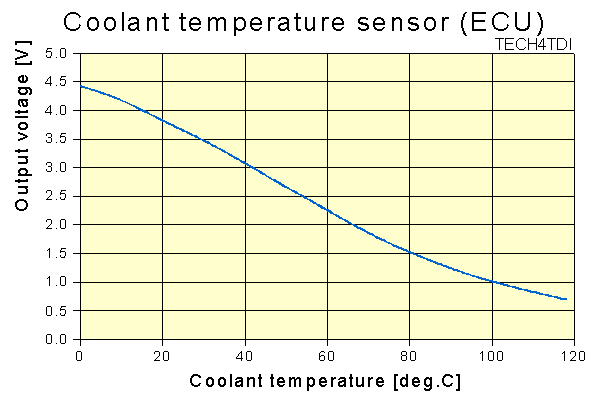Engine coolant temperature sensor
![]()
![]()
Coolant Temperature sensor

The coolant temperature sensor are actually two sensors: one for the engine control unit and one for the instruments control unit. The sensors are both simple NTC (negative temperature coefficient) resistors. The ECU sensor has a constant signal, the other sensor is sampled.
|
Pin |
Description |
Wire color (may vary) |
Connected to |
|---|---|---|---|
|
1 |
Ground* |
Brown/Green (Brown/blue) |
pin 54 of the ECU |
|
3 |
Coolant temperature output |
Brown/Blue |
pin 70 of the ECU |
|
2 |
Ground |
Brown
White |
ground |
|
4 |
Coolant temperature output |
Purple |
pin 8 of the instruments ECU |
It is calculated that there is a 730 ohm resistor connected between 5V and pin
70 in the ECU.

The instruments computer reads the coolant temperature sensor 40 times a second. The voltage on the sensor is high for about 4-6 msec every time it is read. Therefore the sensor voltage can not be measured with a normal voltage meter. One would need an oscilloscoop or a (fast) voltage meter with a maximum voltage function. It is calculated that there is a 230 ohm resistor connected between 5V and pin 8 in the instruments computer.

To check the sensors one can easily measure the resistance with an multi-meter. The resistance measured should be according to the figure below. Note that the resistance has a log-scale. As the instruments ECU doesn't report values below 30 deg.C., the curve stops here. The curve can be extended, so at 0 deg.C. it is expected that the instruments NTC is about 2200 ohms.
.

Example: If the engine is 90 deg.C. the instruments NTC should read about 115 ohms and the engine NTC should read about 250 ohms.
Page last updated:09/25/2004